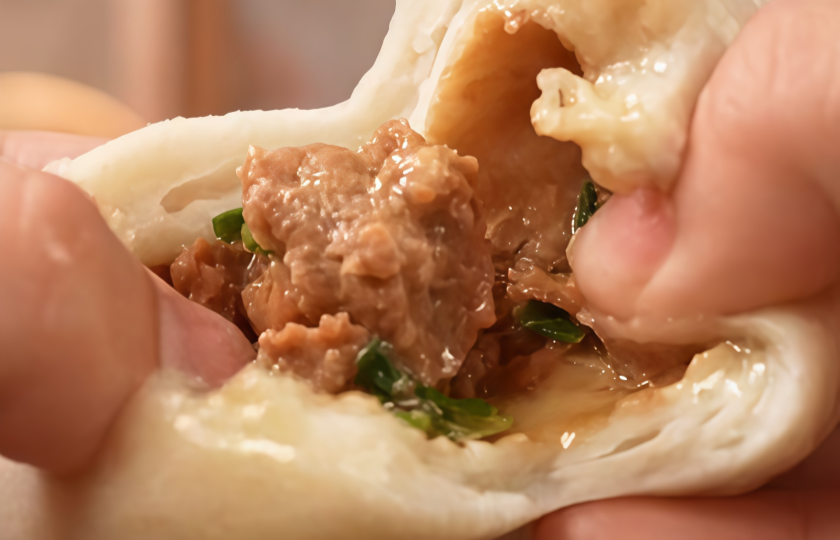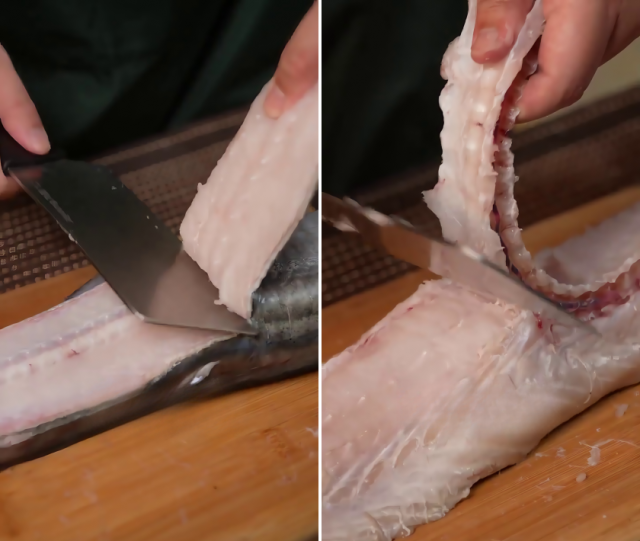Fuzhou Fish Balls

Fish balls, a cherished delicacy from Fuzhou, have captivated food lovers for centuries with their unique bouncy texture and delicate taste. These handcrafted treasures represent the pinnacle of local culinary expertise.
What are Fuzhou Fish Balls?
Fuzhou Fish Balls are a representative snack of Fujian cuisine. The outer skin is made by repeatedly pounding the meat of sea eel into a sticky paste, which is then used to wrap the pork filling. They have a chewy texture and are juicy when bitten into. The fish balls are white on the outside and pinkish on the inside. When you take a bite, the meat juice blends with the fragrance of the fish, making them a regular on the dinner tables of Fuzhou people.
Old Fuzhou people test the quality of a fish ball shop through the "throwing test". That is, throwing a fish ball forcefully at the wall - only those that bounce back are considered qualified! The step of pounding the fish paste in this recipe is precisely to achieve this "table tennis - level" elasticity.

Why do people like this recipe?
Elastic texture: By pounding the fish paste repeatedly, a unique elasticity is formed. The fish balls are smooth when they enter the mouth and do not fall apart.
Juicy and delicious: The inner filling contains juice. When you take a bite, the fragrance of the fish and the meat blend together, delivering a rich umami flavor.
Traditional craftsmanship: Every step, from making the fish paste to wrapping the filling and shaping the balls, reflects the painstaking craftsmanship of Fuzhou Fish Balls.
Versatile eating methods: They are suitable for making soup, tossing with noodles, or using in hot pots. They can even be frozen for later consumption at any time.
Which kind of fish is the most suitable for making fish balls?
Traditionally, sea eel is chosen because its fish meat is delicate and rich in gelatin. After pounding, it has more elasticity, enabling the production of chewy and refreshing fish balls.
If sea eel is unavailable, the following types of fish can be used as substitutes:
Spanish Mackerel: The meat is firm, with good elasticity and a strong umami flavor.
Sole: The meat is delicate but a bit lacking in elasticity, making it suitable for use in mixtures.
Snapper: The fish flavor is mild, resulting in fish balls with a more delicate taste.
The key is to select fish with white meat, few bones, and high gelatin content to make fish balls with the best texture!
INGREDIENTS
Main Ingredients
-
·1000g of sea eel (about 600g of clean meat, boneless and skinned)
-
·Self - selected filling (a meat filling made from 200g of minced pork, 5g of salt, and 5ml of light soy sauce)
Additional Ingredients
-
·10g of chopped scallions (for decoration)
Seasonings
-
·3g of salt (for seasoning the soup base)
-
·10ml of balsamic vinegar (for seasoning the soup base)
COOKING STEP
Step 1
Wash the sea eel thoroughly. Cut the fish fillets along both sides of the backbone, and remove the remaining fish bones and fish skin.

Step 2
Lay the fish fillets flat on a cutting board. Repeatedly pound the fillets with the back of a knife until the fibers are loose and the texture is clearly visible (about 5 minutes).

Step 3
Tilt a spoon at a 45 - degree angle and scrape out the delicate fish paste from the tail to the head direction. Discard the tendons and impurities.

Step 4
Place the scraped fish paste on the cutting board and repeatedly pound it with a mallet for 3 minutes until the gelatin oozes out and the texture becomes sticky and elastic.

Step 5
Put the pounded fish paste into a bowl and knead it into a paste.

Step 6
Take 20 grams of fish paste and spread it flat on the palm. Wrap 5 grams of filling and close the opening, then roll it into a ball with a diameter of 3 centimeters.

Step 7
Heat clean water to a gentle boil (about 90°C), put the fish balls in and cook them over low heat for 4 minutes until they float to the surface.

Step 8
Add 3 grams of salt, 10 ml of balsamic vinegar for seasoning, and a little chopped scallions.

More recipes worth trying
Traditional Hakka Tea Cake Recipe
Precautions
Sufficiently delicate fish meat: When scraping the fish paste, remove the tendons and impurities to ensure a smooth texture.
Adequate pounding: Pounding the fish paste is the key to making the fish balls elastic. Pound it for at least 3 minutes until the gelatin oozes out.
Control the water temperature: When cooking the fish balls, keep the water temperature around 90°C (at a gentle boil, not a rolling boil) to prevent the fish balls from falling apart or becoming overcooked.
Tight closing: When wrapping the filling, make sure the fish paste completely covers the inner filling, otherwise the fish balls are likely to split during cooking.
Add salt later: Add salt to season the fish balls after they are cooked to avoid affecting the texture and elasticity.
Varied Cooking Methods
Fuzhou Fish Balls can have many interesting variations. Try the following:
Different fillings: The traditional filling consists of pork, scallions and ginger, but you can replace it with shrimps, shiitake mushrooms, salted egg yolks, cheese, etc., to create a more diverse flavor.
Matched with different soup bases: Besides clear soup, you can use seaweed and egg drop soup, chicken soup, pepper and pig stomach soup. You can even add some miso or coconut milk to create an innovative flavor.
Filling - free version: If you prefer the pure taste of fish balls, you can skip the filling and directly shape the fish paste into small balls. The texture will be even more chewy.
Fried fish balls: After cooking, remove the fish balls and let them air - dry slightly. Then fry them until golden brown. They will be crispy on the outside and tender on the inside. It's even more satisfying when served with sweet chili sauce or garlic sauce!
Curry fish balls: Put the cooked fish balls into coconut milk curry and simmer for a while. The taste is rich and layered, and it goes well with rice or noodles.
Eating Suggestions
Matched with soup bases: The traditional way to eat is fish balls in clear soup, adding a little white pepper and chopped scallions to enhance the freshness. You can also try seaweed and egg drop soup, hot and sour soup, or pepper and pig stomach soup for a more diverse flavor.
Eaten with rice: Pair fish balls with steamed white rice or marinated pork rice, and drizzle some soy sauce or garlic chili sauce. It goes really well with rice!
As hot pot ingredients: Put the fish balls into spicy hot pot, pork bone soup pot, or curry pot. Once they soak up the soup, every bite will be extremely satisfying!
Enhancing flavor through frying: After cooking the fish balls, let them air - dry slightly and then pan - fry until slightly charred or deep - fry. They will be crispy on the outside and tender on the inside. Dipping them in sweet chili sauce or garlic sauce is even more mouth - watering!
As snacks: Thread the fish balls on skewers, add soy sauce, chili powder, or teriyaki sauce to turn them into street - style snacks. It's simple yet delicious!
FAQs:
Ordinary fish balls generally have no fillings, and the texture of the fish meat is a bit firmer.

















